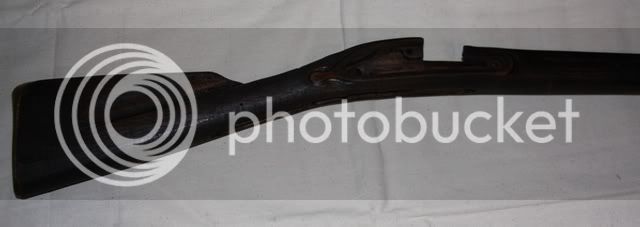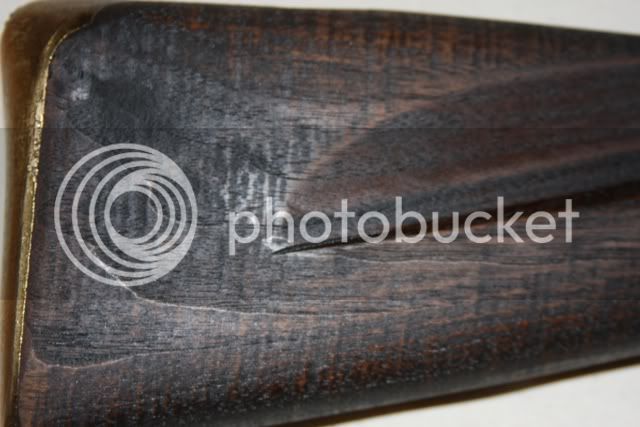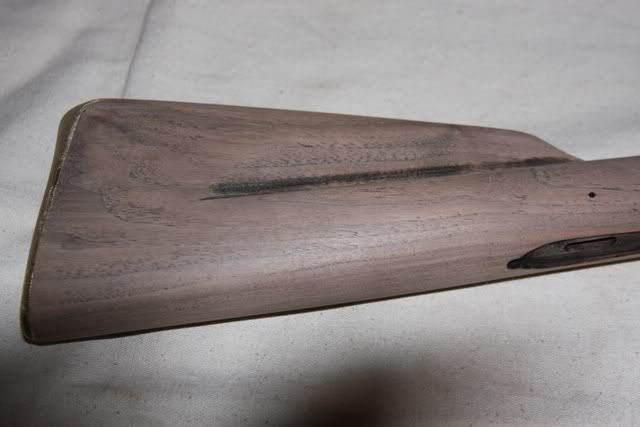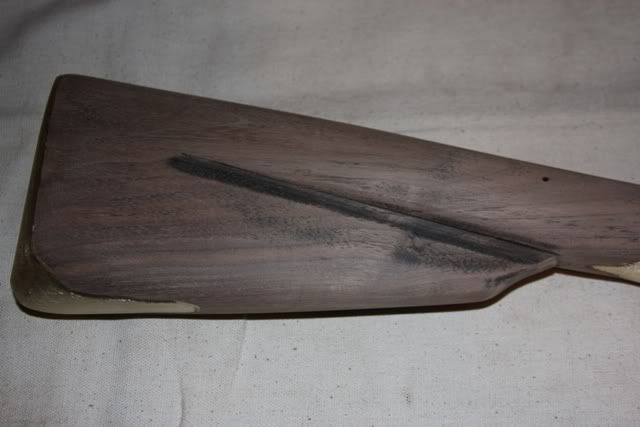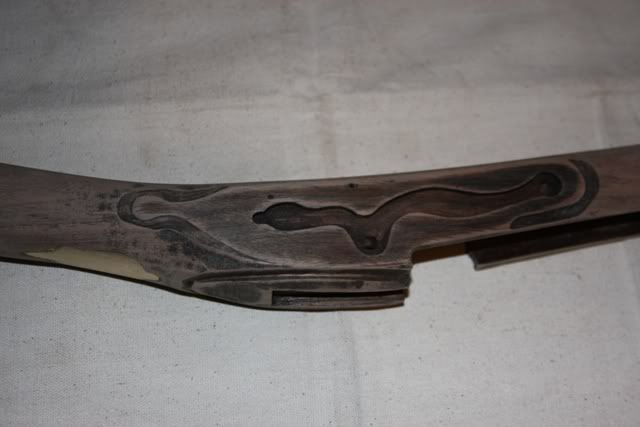IMO, you should get out the sandpaper again.
I am seeing a number of marks that were left by the gunstock profiling machine and these should all be removed.
To clarify what I mean, in the lower picture I am seeing many vertical stripes. These were left by the cutter on the machine that formed the stock and they should not be at all visible.
Some of these marks may have been left by your sandpaper too.
Are you sanding "with the grain"? That is, in the long direction of the stock?
Sanding "cross grain" will remove a lot of wood real fast but it also leaves a lot of visible marks.
The primary rule to remember when sanding is always sand "with the grain". The only time sanding across the grain is used is (as I mentioned above) when a lot of wood needs to be removed or when there is no other choice.
As I sit here looking at that picture, I also notice that the edges of the butt plate still look rough. They should not have a rough surface so, here is what I suggest:
First use a flat file and slowly file the edges of the butt plate so it is a smooth continuous surface. It may be slightly smaller than the wood.
When the metal part is smooth, then start sanding the wood down to match the butt plates size and shape. When you do this, do not sand just in the area of the butt plate. Continue your sanding at least 8 inches up the stock from the metal. 10 inches is even better.
What you don't want to end up with is a large chunk of wood with the ends tapered down to the metal size. You want a nice smooth piece of wood that doesn't change directions rapidly. It blends and fairs into the metal parts.
Yes, I know. This is a lot of work but if you put this work into your project when it is finished you will be real glad you did the extra work.
Now. Speaking of the stain, usually Walnut doesn't require any to look good.
Although it looks rather light colored it darkens a lot when it is finished. To see the actual unstained color just apply some water to the surface. That is the color and darkness it will be when it is simply finished with a finishing oil.
I do not and I can not recommend ANY oil based stain. I'm not saying they won't work at all but they usually tend to mask or cover the fine grain of the natural wood.
I do recommend the alcohol based or even the water based stains over any oil based stain made.
Walnut is called an "open grain" wood. This is because the pores of the wood are open at the surface.
Since you are building a Military arm, it is totally acceptable to leave these pores "open" when the gun is finished.
Actually to finish the gun after you have removed all traces of the stock cutting machine and blended its surfaces with the metal parts all you need to do is to apply several coats of Linseed Oil.
Linseed oil was used on the originals and it will work nicely on your gun as well.
It does not dry very rapidly. Plan on applying a generous coat and let it sit overnight. Then apply another coat and again allow it to sit overnight.
After about a week of this (or 6 coats) you will notice that the wood is no longer absorbing all of the oil. It is beginning to dry on the surface.
Yes, many of the open pores will still be open but that is the way it is supposed to look on a military gun.
Get out the sandpaper and give it another shot.
Most of all, don't get discouraged. Keep at it and it soon will be looking like a professional did the work.


